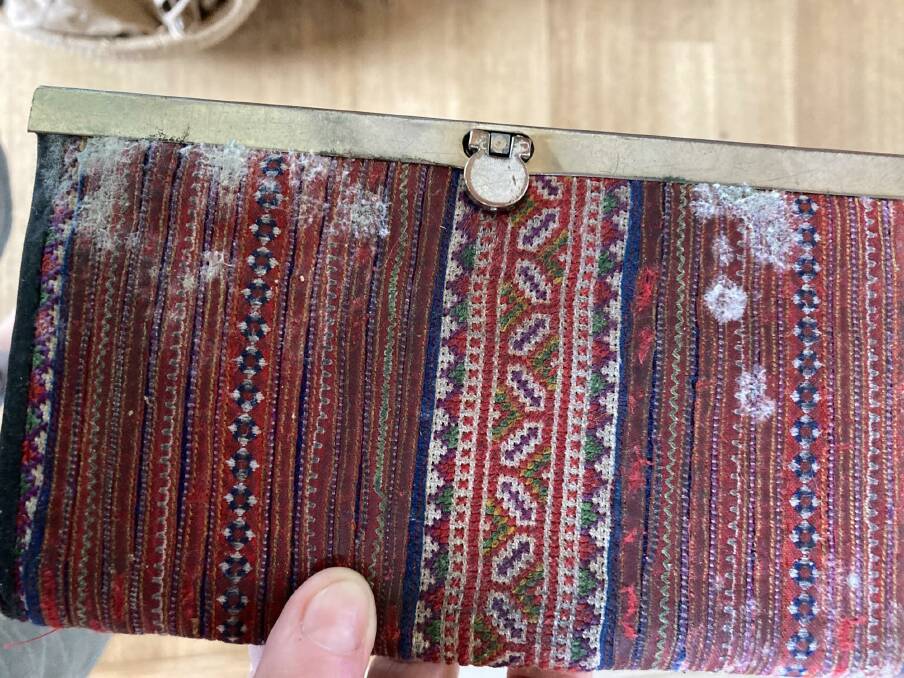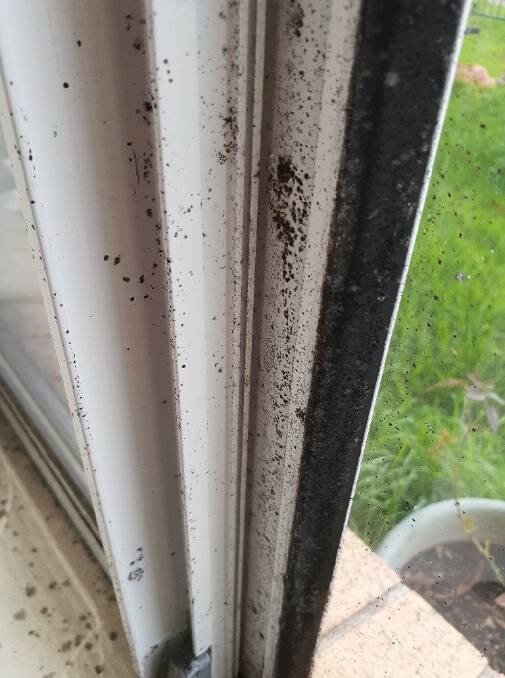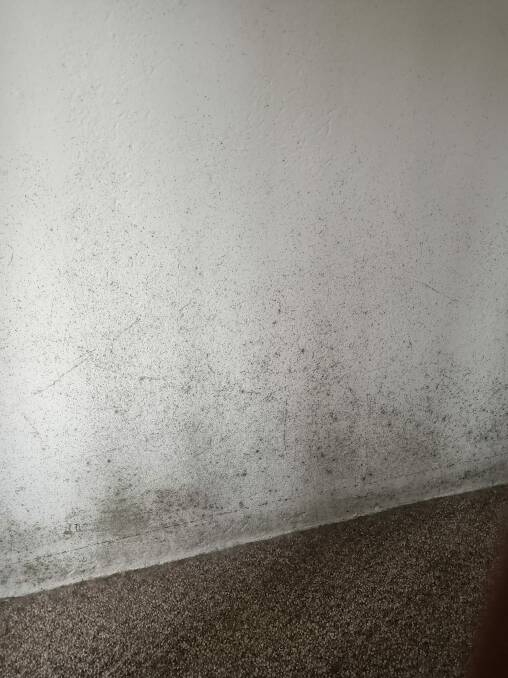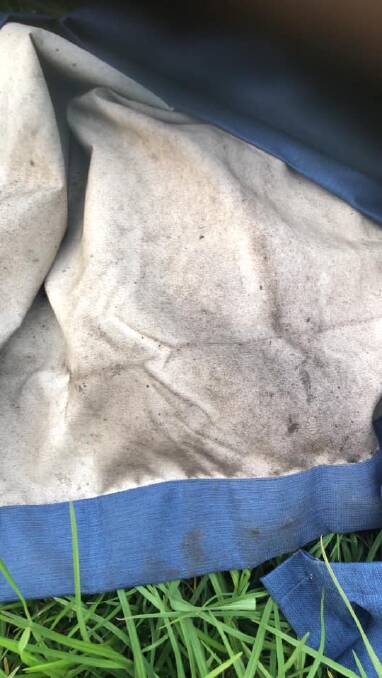Vanessa didn't think things could get much worse after her house flooded.
Subscribe now for unlimited access.
or signup to continue reading
Left with no electricity or gas, Vanessa was forced to vacate her home near Robertson, and is currently staying in a hotel awaiting repairs.
Already budgeting $3000 for electrical repairs, when Vanessa returned to inspect her home, she found an additional battle awaiting her. A house full of mould.

With repair and hotel costs adding up, Vanessa made the decision to tackle the mould herself.
"There is visible black mould over the cupboards and a blueish/grey mould over fabric items and the floor," she said.
"I've never dealt with so much mould in my life and I'm not really sure what the long term consequences will be.
"I've had a headache each time I've been back to my house to clean. It's also really hard because I work full-time and can't leave windows or doors open to help ventilate the house."
ALSO READ: Murder charges over boarding house fire
Architectural scientist, Dr Tim Law, has a special interest and expertise in condensation and mould in buildings.
He said that current building standards in relation to mould were not up to scratch.
"A building can be completely code compliant, yet still be mouldy," he said.
"If a building is code compliant then insurance is unlikely to cover any repairs, which leaves house owners to cover the cost of mould remediation themselves."
Dr Law said after heavy rain and flooding, the first step should always be to dry things out as much as possible, and advised house owners to cut into plaster board to help dry out insulation inside walls.
"The fastest mould can grow in 48 hours, so you have to act quickly," he said.

However, it's not just flooded houses that have been affected by mould.
Another Southern Highlands resident said while there had always been mould in her home, it had been much worse in the last month and had appeared in rooms it'd never been in before, including the bedroom.
"I've lived here for more than 20 years and I've never seen mould grow like this," she said.
"I have had a serious chest infection directly attributable to the mould as well as other health problems."
She said her GP identified mould as the cause of her chest infection as she had no previous history of infections.
"I wasn't suffering from a viral infection at the time and tested negative for common bacterial infections.
"My GP attributed it to the increased black, and other mould, growing in the house, but especially in our bedroom where it is in the carpet and walls.
"My husband has not been as sick but he has been wheezy for about a month, and the doctor attributes that to the mould as well."
However, she left the practice with little advice on how to actually get rid of the mould.
"I used to work in public health and actually questioned her about this and she seemed to have no idea how to kill the mould in the house, only how to write a prescription for anti-fungal treatment for me. Her only advice was to 'clean it up'," she said.

A 2018 federal government report on an inquiry into biotoxin-related illness in Australia found the prevalence of a condition referred to as Chronic Inflammatory Response Syndrome (CIRS) as a potential mould-related illness.
CIRS is a progressive, multi-system, multi-symptom illness characterised by exposure to biotoxins.
Symptoms include allergies, headaches, migraines, foggy brain, blurry vision, mood swings, sore throat, lung and chest infections.
However, biotoxin-related illnesses and CIRS are currently not widely recognised medical conditions among the Australian medical profession.
Danuta Hulajko is a naturopath who specialises in the treatment of mould-related illness from the Southern Highlands, she said only a handful of GP's and naturopaths in Australia were trained in treating people affected by mould.
"They are the experts who have trained themselves overseas," she said.
"Mould gets into all of the body's systems and causes systemic inflammation, it's extremely hard to treat."
Kat Hinkley is a Goulburn resident who believes she has been impacted by an increase of mould growing in her house.
"I'm getting quite sick with constant migraines and neuro symptoms but struggling to get assistance either fixing it up quickly or getting mould recognised as a health issue," she said.
"I've mentioned the mould to my GP and it hasn't triggered any concern so I'm going to have to really start pushing for answers."
Southern Highlands resident Penny Watson is particularly hoping her GP can provide information on mould as her partner has a chronic inflammatory lung disease.
The severe rain has caused her house to become overrun with mould.
"A very decent velour recliner chair is now ruined and the smell that is emitting from it, it's terrible, I'm having daily headaches and migraines," she said.

"I went straight to Google and honestly there is not a great deal on there. I spoke with my partner last night to organise to see our GP."
Goulburn Health Hub practice manager Sophie Ashton encouraged people to see their doctor for assessment and medical management if they were experiencing any mould-related symptoms.
ALSO READ: One million Australian homes flood-prone
However, Ms Hulajko said if you do not get rid of the source of mould, or remove yourself from a mouldy environment, symptoms will come back.
Yet finding a mould-free environment can be extremely difficult.

In fact, Dr Law said 30 to 35 per cent of buildings in Australia were affected by condensation, not to mention the recent flooding.
"Majority of buildings have mould in them," he said.
Ms Hulajko said everyone from local councils to the department of health should take greater responsibility to raise awareness around issues related to mould.
"There should be specific legislation around mould and building standards. There should be an environmental officer who has the expertise to check that houses have been built to be mould-proof," she said.
With climate change set to make extreme weather events more frequent, Dr Law said any changes to building standard should address multiple environmental factors to avoid unintended consequences or create hidden problems.
"For example, houses after the 2009 bushfires were built to prevent embers entering into roofs however, this also prevented ventilation and led to condensation inside roofs," he said.
There has been progress since the 2018 federal government report on an inquiry into biotoxin-related illness, including the National Health and Medical Research Council providing a $2 million research grant to go towards linking CIRS to mould, Dr Law said.
"However, in regard to construction codes and building standards, a lot more still needs to be done," he said.
We depend on subscription revenue to support our journalism. If you are able, please subscribe here for the Highlands and here for the Tablelands. If you are already a subscriber, thank you for your support.


